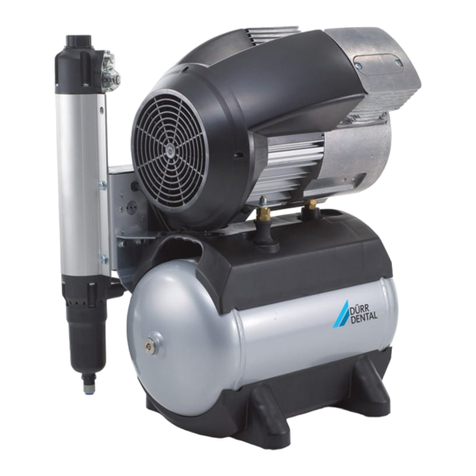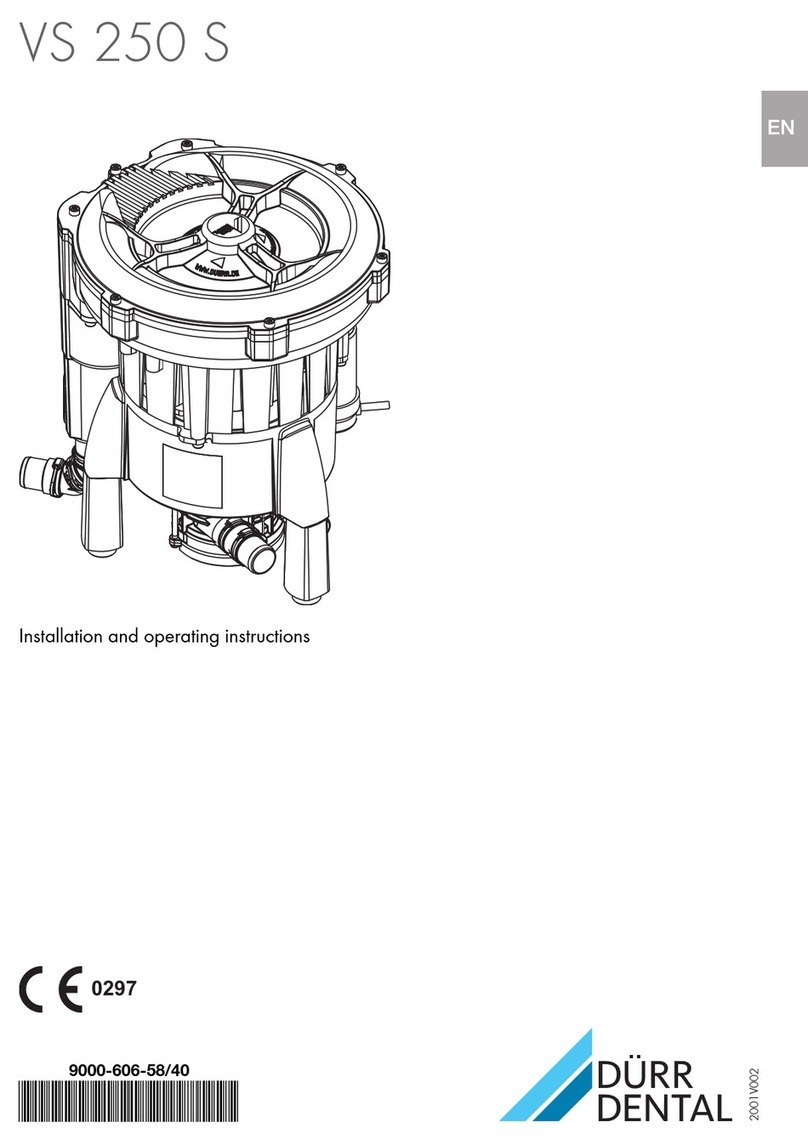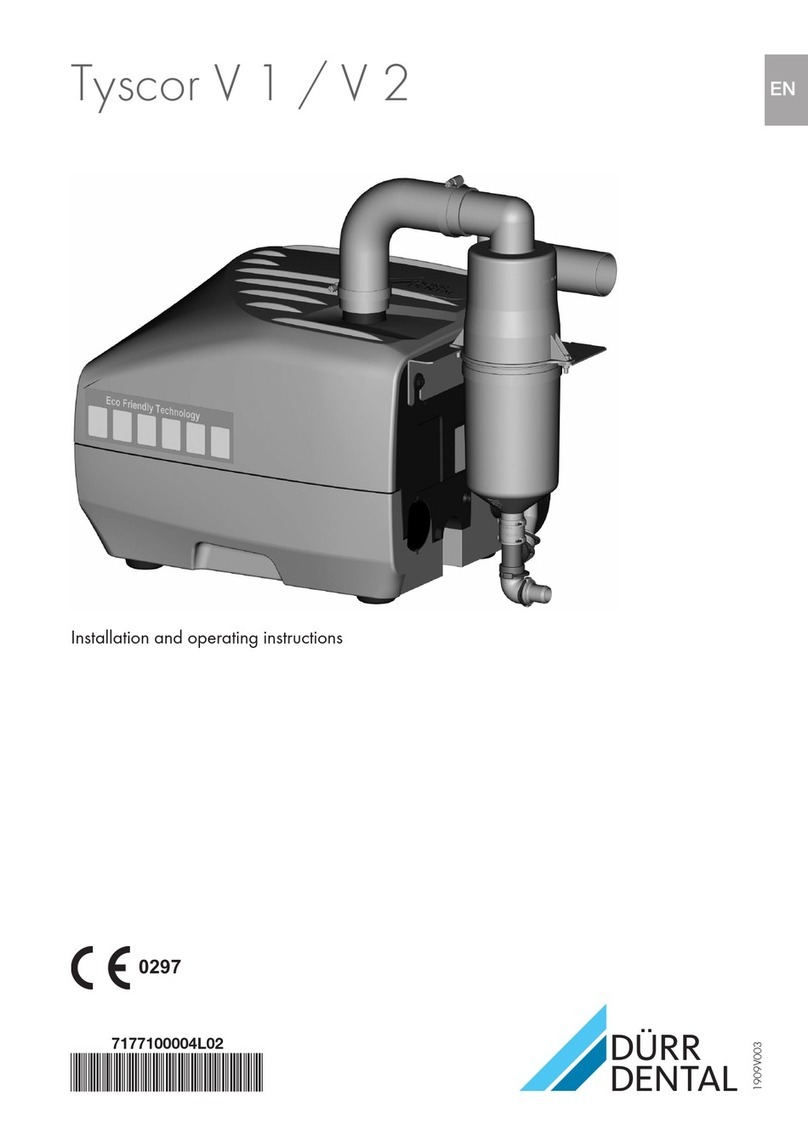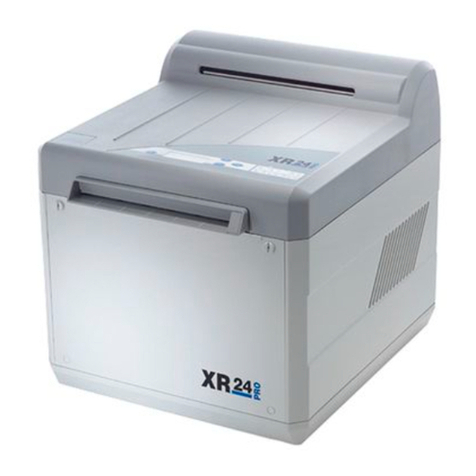
– Use for separation of dust, sludge, plaster or
similar.
– Use in conjunction with flammable or explosive
mixtures.
– Installation in a manner that does not comply
with the installation instructions, in particular
installation in rooms containing a potentially
explosive atmosphere.
– Cleaning and disinfection with agents contain-
ing sodium hypochlorite or potassium hypo-
chlorite.
2.4 Systems, connection with
other devices
Additional devices connected with medical elec-
trical devices must be proven to conform with
their corresponding IEC or ISO standards. All
configurations must continue to comply with the
standard requirements for medical systems (see
IEC 60601-1).
Whoever connects additional devices to medical
electrical devices automatically becomes the sys-
tem configurator and is responsible for ensuring
that the system corresponds with the standard
requirements for systems. Local laws take priority
over the requirements outlined above.
2.5 General safety information
❯Always comply with the specifications of all
guidelines, laws, and other rules and regula-
tions applicable at the site of operation for the
operation of this unit.
❯Check the function and condition of the unit
prior to every use.
❯Do not convert or modify the unit.
❯Comply with the specifications of the Installa-
tion and Operating Instructions.
❯The Installation and Operating Instructions
must be accessible to all operators of the unit
at all times.
2.6 Specialist personnel
Operation
Unit operating personnel must ensure safe and
correct handling based on their training and
knowledge.
❯Instruct or have every user instructed in han-
dling the unit.
Installation and repairs
❯Installation, readjustments, alterations,
upgrades and repairs must be carried out by
Dürr Dental or by qualified personnel specifi-
cally approved and authorized by Dürr Dental.
2.7 Notification requirement of
serious incidents
The operator/patient is required to report any
serious incident that occurs in connection with
the device to the manufacturer and to the com-
petent authority of the Member State in which
the operator and/or patient is established/resi-
dent.
2.8 Electrical safety
❯Comply with all the relevant electrical safety
regulations when working on the unit.
❯Never touch the patient and unshielded plug
connections on the device at the same time.
❯Replace any damaged cables or plugs immedi-
ately.
Observe the EMC rules concerning medical
devices
❯The unit is intended for use in professional
healthcare facilities (in accordance with IEC
60601-1-2). If the appliance is operated in
another environment, potential effects on elec-
tromagnetic compatibility must be taken into
account.
❯Do not operate the unit in the vicinity of HF sur-
gical instruments or MRT equipment.
❯Keep a minimum distance of 30 cm between
the unit and mobile radio devices.
❯Note that cable lengths and cable extensions
have effects on electromagnetic compatibility.
NOTICE
Negative effects on the EMC due to
non-authorised accessories
❯Use only Dürr Dental parts or accesso-
ries specifically approved by Dürr Den-
tal.
❯Using any other accessories may result
in increased electromagnetic interfer-
ence emissions or the unit having
reduced electromagnetic immunity,
leading to an erroneous operation
mode.
Important information
7117100018L30 2011V003 5
EN





































